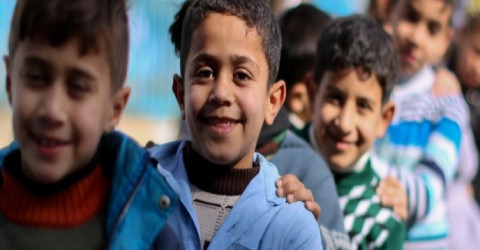
GCED Basic Search Form
Quick Search
Vous êtes ici
Nouvelles

In 2017, aid to education totaled US$ 13.2 billion, down 2% or US$288 million compared to 2016. The figures, released by the Global Education Monitoring Report, published by UNESCO, show the levels of aid to education continue to stagnate, growing by only 1% per year on average since 2009.
These figures raise questions about the global commitment to achieving SDG 4, the global education goal. An increasingly fragmented architecture for financing education is not helping. A new multilateral mechanism, the International Financing Facility for Education, which aims to lower the cost of borrowing for education for middle income countries, is expected to be announced later this month. It is an addition to the Global Partnership for Education, which provides grants to low income countries, and the Education Cannot Wait fund, which focuses on emergency contexts.
Manos Antoninis, director of the Global Education Monitoring Report says the commitment isn’t there. “There has been big talk about big ambitions ever since 2015 when our new education agenda was set, and yet donors are shifting money around, tinkering with different ways to spend a fixed sum, but not giving more.”
Donors have not kept their promises to keep to the UN target of 0.7% of gross national income to foreign aid. Doing just that and allocating 10% of that aid to primary and secondary education, would have been enough to fill the US$39 billion dollars annual financing gap. Yet, education has become less of a priority for development partners, with the share of education falling from a peak of 10.7 % of total aid in 2007 to just 7.1% in 2017. Of the top ten OECD donors to education, the United Kingdom is the only G7 country dedicating the UN target figure of 0.7% of its gross national income to foreign aid.
Much of the cut to total aid to education can be explained by the United Kingdom decreasing its aid to education by 29%, of which 60% was a drop in its allocation to basic education. From being the second largest donor to total basic education in 2016, it has fallen to fourth place in 2017 with US$ 517million.
Overall, Germany tops the donor scoreboard for aid to education, disbursing US$2 billion in 2017, followed by the United States with $1.5 billion and France with US$1.3 billion. France was the donor that increased its funding the most from 2016 to 2017, by a total of US$207 million. This is in line with the announcement that France would increase its official development assistance to 0.55% of its gross national income by 2022.
However, 58% of Germany’s and 69% of France’s aid is directed at scholarships and imputed costs for students from developing countries to study in their tertiary education institutions. If these items were excluded, the remaining aid to education would have decreased even more over the past year, by 5% or US$534 million, as aid to higher education increased, while aid to secondary education fell by 2% and aid to basic education by 8% between 2016 and 2017.
Antoninis says the trends are alarming. “A drop in aid to education could be something to celebrate if it looked like it was due to governments needing less, but this doesn’t seem to be the case. Governments in low income countries spend, on average, 16% of their budgets on education, far more than richer countries, and are off track meeting even the 2015 target of universal primary education. With no action from donors to support them, it’s even less likely that our ambitious education goal will be reached”.
URL :
https://en.unesco.org/news/aid-education-falls-slightly-2017-shifts-away-primary-education
